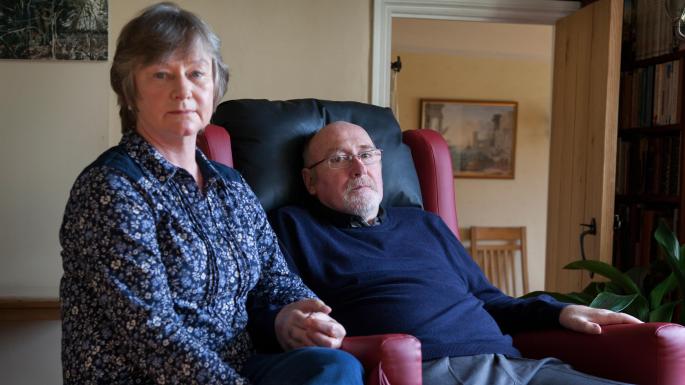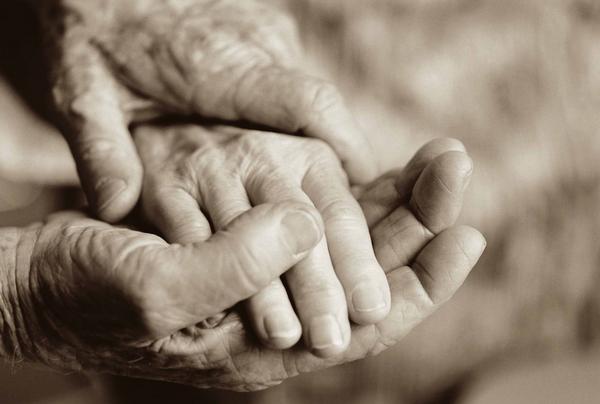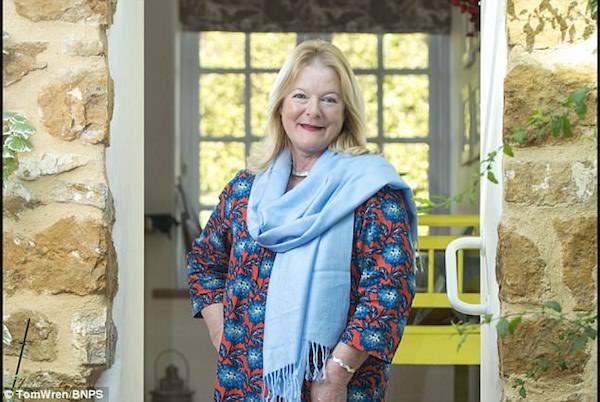
By Peter Wehner
[T]hese days I find I’m more alert to the grief and sorrow around me than I once was. In part it’s a product of my age, of youth giving way. I’m guessing my situation is not that different from many of yours.
Last month I checked in on a childhood friend whose 13-year-old son committed suicide last year after struggling with a brain injury. He told me, “I’ve stopped crying every day, which is a major transition.” He added, “I spent more than a year trying to get him well and keep him alive, and only in recent days have I finally, mostly, lost that mode of thinking. I don’t have to do anything now because I can’t.” Yet in his dreams, my friend said, his son is still alive and he’s checking on him to make sure he’s O.K.
Another lifelong friend recently died of colon cancer. His wife wrote to me: “I wish I could tell you that we are walking this journey with courage and faith, but that really doesn’t describe our situation at all. The outward courage feels like a ruse to convince ourselves that this immense pain will subside in time, and the weakness of our faith is showing us its shallow limits.”
Sometimes the struggles are not about death but things like addiction. Two weeks ago I spoke to a friend whose wife had told him she no longer wanted to be married to him because of his relapse into alcoholism, which he described as a “deep, dark struggle” that robbed him of his true personality. (He’s now in recovery, trying to rebuild his life.)
Stories like these are hardly the whole of life, and most of the people I know are in a pretty good place. Yet every life has a story, and every story is marked by pain, loss and sorrow. Sometimes we suffer; other times we have to watch people we love suffer. Each situation is difficult in its own way.
I’m no theologian. My professional life has been focused on politics and the ideas that inform politics. Yet I’m also a Christian trying to wrestle honestly with the complexities and losses in life, within the context of my faith. And while it’s fine for Christians to say God will comfort people in their pain, if a child dies, if the cancer doesn’t go into remission, if the marriage breaks apart, how much good is that exactly?
During 1940 C. S. Lewis wrote “The Problem of Pain.” Lewis’s answer to why an all-good and all-powerful God would allow his creatures to suffer pain was a bit too neat and tidy. Among other things, he wrote, “God whispers to us in our pleasures, speaks in our conscience, but shouts in our pain: It is His megaphone to rouse a deaf world.”
Now flash forward two decades to the publication of “A Grief Observed,” which Lewis wrote after his wife’s death. God’s megaphone didn’t just rouse Lewis, it nearly shattered him. In writing about his bereavement, Lewis described what it was like to go to God “when your need is desperate, when all other help is vain, and what do you find? A door slammed in your face, and a sound of bolting and double bolting on the inside. After that, silence.” He added: “Not that I am (I think) in much danger of ceasing to believe in God. The real danger is of coming to believe such dreadful things about Him. The conclusion I dread is not ‘So there’s no God after all,’ but ‘So this is what God’s really like. Deceive yourself no longer.’ ”
Years ago I had lunch with a pastor and asked him about his impressions of “A Grief Observed.” His attitude bordered on disdain. He felt that Lewis allowed doubt to creep in when his faith should have sustained him.
My response was the opposite. Perhaps because my own faith journey has at times been characterized by questions and uncertainty, I found the fact that the 20th-century’s greatest Christian apologist would give voice to his doubts reassuring. And Lewis was hardly alone in expressing doubts. Jesus himself, crucified and near death, gave voice to the question many people overwhelmed by pain ask: “My God, my God, why have you forsaken me?”
Jesus’ question, like ours, was not answered in the moment. Even he was forced to confront doubt. But his agonized uncertainty was not evidence of faithlessness; it was a sign of his humanity. Like Job, we have to admit to the limitations of human knowledge when it comes to making sense of suffering. “From the biblical evidence,” the Christian author Philip Yancey has written, “I must conclude that any hard-and-fast answers to the ‘Why?’ questions are, quite simply, out of reach.” So, too, is any assurance that the causes of our suffering, the thorns in our flesh, will be removed. So what, then, does Christianity have to offer in the midst of hardships and heartache?
The answer, I think, is consolation, including the consolation that comes from being part of a Christian community — people who walk alongside us as we journey through grief, offering not pieties but tenderness and grace, encouragement and empathy, and when necessary, practical help. (One can obviously find terrifically supportive friends outside of a Christian community. My point is simply that a healthy Christian community should be characterized by extravagant love, compassion and self-giving.)
For many other Christians, there is immense consolation in believing in what the Apostle Peter describes as an eternal inheritance. “In all this you greatly rejoice,” he writes, “though now for a little while you may have had to suffer grief in all kinds of trials.” It is a core Christian doctrine that what is seen is temporary and what is unseen is eternal, and that what is eternal is more important than what is temporal.
But even so great an assurance as eternal life, at the wrong time and in the wrong hands, can come across as uncaring. It’s not that people of faith, when they are suffering, deny the heavenly hope; it’s that in being reminded of this hope they don’t want their grief minimized or the grieving process overlooked. All things may eventually be made new again, but in this life even wounds that heal leave scars.
There is also, for me at least, consolation in the conviction that we are part of an unfolding drama with a purpose. At any particular moment in time I may not have a clue as to what that precise purpose is, but I believe, as a matter of faith, that the story has an author, that difficult chapters need not be defining chapters and that even the broken areas of our lives can be redeemed.
The book of Isaiah, in prophesying the messiah, describes him as “man of sorrows and acquainted with grief.” We’re told “by his wounds we are healed.” For those of the Christian faith, God is a God of wounds, where the road to redemption passes directly through suffering. There is some solace in knowing that while at times life is not easy for us, it was also hard for the God of the New Testament. And from suffering, compassion can emerge, meaning to suffer with another — that disposition, in turn, often leads to acts of mercy
I have seen enough of life to know that grief will leave its mark. But I have also seen enough of life to know that so, too, will love.
Complete Article HERE!









